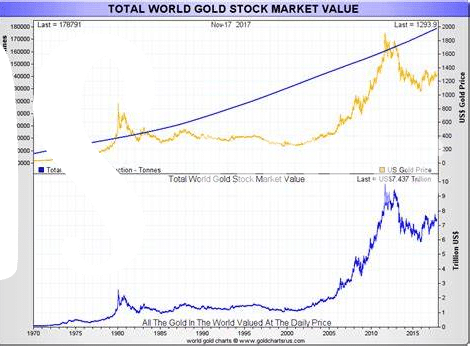Journey from the Past: Bitcoin’s Ancient Roots 🏺

Imagine stepping way back in time, to a world where trade meant bartering with goods, like grains for meat or pottery for cloth. This was our first “currency,” rooted deeply in ancient civilizations. But as people moved, interacted, and communities grew, there was a need for something easier to carry, more universally accepted. Enter precious metals, shiny and rare, becoming the first step towards what we consider money today. Fast forward through history, and we see coins, paper money, and eventually digital transactions shaping our financial landscape.
| Epoch | Currency Form | Significance |
|---|---|---|
| Ancient Civilizations | Barter Goods | The start of trade and economy. |
| Ancient to Middle Ages | Precious Metals | Universal value acknowledged. |
| Modern Era | Digital Transactions | Convenience and global reach. |
It’s fascinating to think about this journey. The essence of bitcoin, born in the digital age, actually shares its roots with these ancient forms of trade and currency. It’s like a bridge connecting our past with the future, transforming the way we think about and use money. Bitcoin, in its essence, is a nod to these ancient traditions, yet it leaps forward, making transactions faster, more secure, and without the need for a physical exchange. This blend of history and innovation paves the way for a financial revolution, setting the stage for a future where digital currency is part of our daily lives.
The Digital Awakening: Bitcoin Enters the 21st Century 💡
As the clock struck midnight on December 31, 1999, the world didn’t just welcome a new millennium; it also opened its doors to a digital revolution that would shape the future of finance. At the heart of this transformation was Bitcoin, a novel idea proposed by a person (or a group) known only by the pseudonym Satoshi Nakamoto. Bitcoin introduced the world to the concept of cryptocurrency – a form of money that is entirely digital, allowing for transactions to occur directly between users without the need for intermediaries like banks.
The real magic of Bitcoin lies in its foundational technology called blockchain, which records all transactions securely and transparently. This digital ledger technology ensured that Bitcoin was not just a flash in the pan but a durable, secure form of money that could stand the test of time. As people began to recognize its value, Bitcoin started to grow from an obscure internet currency to a global phenomenon, attracting attention from both individual enthusiasts and big institutions alike. To learn more about how these technologies are shaping Bitcoin transactions in 2024, visit https://wikicrypto.news/2024-bitcoin-trends-navigating-the-financial-frontier.
Breaking Barriers: How Bitcoin Became Everyone’s Asset 🌍

Once considered a niche investment for the tech-savvy, Bitcoin has shattered those boundaries, transforming into a treasure chest that’s open to all. From bustling city dwellers to remote villagers, its digital sparks have reached every corner of the globe 🌍. This journey into the mainstream began as whispers in online forums, growing into a chorus that couldn’t be ignored. People realized they didn’t need hefty bank accounts or fancy titles to partake; a simple digital wallet sufficed. Their collective embrace turned Bitcoin from an esoteric digital puzzle into a widely recognized form of wealth. Today, it stands as a symbol of financial empowerment and inclusivity, proving that innovation knows no bounds and financial freedom is truly for everyone 💼🚀. With each transaction, Bitcoin continues to knit a tighter community, transcending geographical, economic, and social barriers.
Bitcoin in 2024: Beyond Just a Currency 💼

As we edge closer to 2024, Bitcoin has proven itself to be much more than a simple currency. This digital marvel, once seen as just an online coin for tech enthusiasts, has transformed into a vast ecosystem, offering a variety of opportunities beyond mere transactions. Think of Bitcoin as a sprawling tree, its roots deeply embedded in the world of finance, but its branches reaching into the realms of investment, technology, and even everyday purchases. It’s not just about buying and selling anymore; it’s about building a new digital architecture where Bitcoin plays a central role in securing assets, fostering innovation, and providing access to a global financial network for people everywhere. Companies are now holding Bitcoin as part of their treasury, signaling a shift in how the corporate world views this digital asset. Moreover, with technological advancements making Bitcoin transactions faster, cheaper, and more secure, it’s clear that this digital currency is here to stay. For those curious about the nitty-gritty of how these developments impact the market, a detailed look at how does bitcoin work market trends in 2024 can provide deeper insights. In essence, Bitcoin in 2024 stands as a testament to human innovation, breaking down financial barriers and reimagining what money can be in the digital age.
Tackling the Giants: Bitcoin Vs. Traditional Money 🥊
Imagine an epic showdown, like in those superhero movies, but this one’s in the financial world. In one corner, we have traditional money – the kind we’ve all grown up with, coins and paper that physically exist. It’s like the long-reigning champion everyone knows. In the other corner, stepping into the ring with a swag, is Bitcoin. Unlike its opponent, Bitcoin lives in the digital realm. It doesn’t exist in any physical form, but its power and influence are growing stronger every day. This battle isn’t just about which is more popular; it’s about how we see and use money itself. Bitcoin offers a level of freedom and flexibility that traditional money can’t, letting people send money across the world swiftly, without the need for banks to chip in.
The face-off raises big questions. 🤔 Will Bitcoin continue to rise, challenging the dominance of traditional money? Many believe it will, arguing that its digital nature makes it more adaptable to our fast-moving, online world. But it’s not a simple victory. Traditional money isn’t bowing out; it’s fighting back, with banks exploring digital currencies and innovations to keep pace. The table below paints a picture of this intriguing contest:
| Feature | Bitcoin | Traditional Money |
|---|---|---|
| Physical Existence | No | Yes |
| Transaction Speed | Fast | Varies |
| Global Use | Borderless | Limited by Country |
| Innovation | High | Moderate |
| Control | Decentralized | Centralized |
The verdict? Well, many eyes are on the future, watching keenly as this battle unfolds. Both contenders have their strengths, but as we step deeper into a digital age, the scales might tip more towards Bitcoin. Yet, one thing’s for sure – this contest is far from over. ⚖️🔮
The Future Beckons: What Next for Bitcoin? 🔮

As we look ahead, the path for Bitcoin sparkles with possibilities and challenges. Imagine a world where you can send money across the globe in seconds, without paying hefty fees or dealing with complicated bank procedures. That’s the promise Bitcoin dangles before us, like a golden carrot. But it’s not just about sending money. Think of it as a kind of digital gold that you can keep in your digital wallet, growing in value over time. People are starting to notice, from the person next door to big companies, making Bitcoin more popular each day. Yet, as it steps into the spotlight, questions bubble up about its safety and the rules of the game. 🌐✨
For those diving deeper into Bitcoin’s journey and what lies ahead, it’s crucial to navigate the waters of regulation and security with care. A click away, you can explore when was bitcoin created market trends in 2024, offering a sneak peek into the evolving landscape. Understanding these aspects is like having a map in an uncharted territory, providing guidance on how Bitcoin continues to shape our financial future while ensuring our digital treasures remain safe and sound. 🗺️🔒
